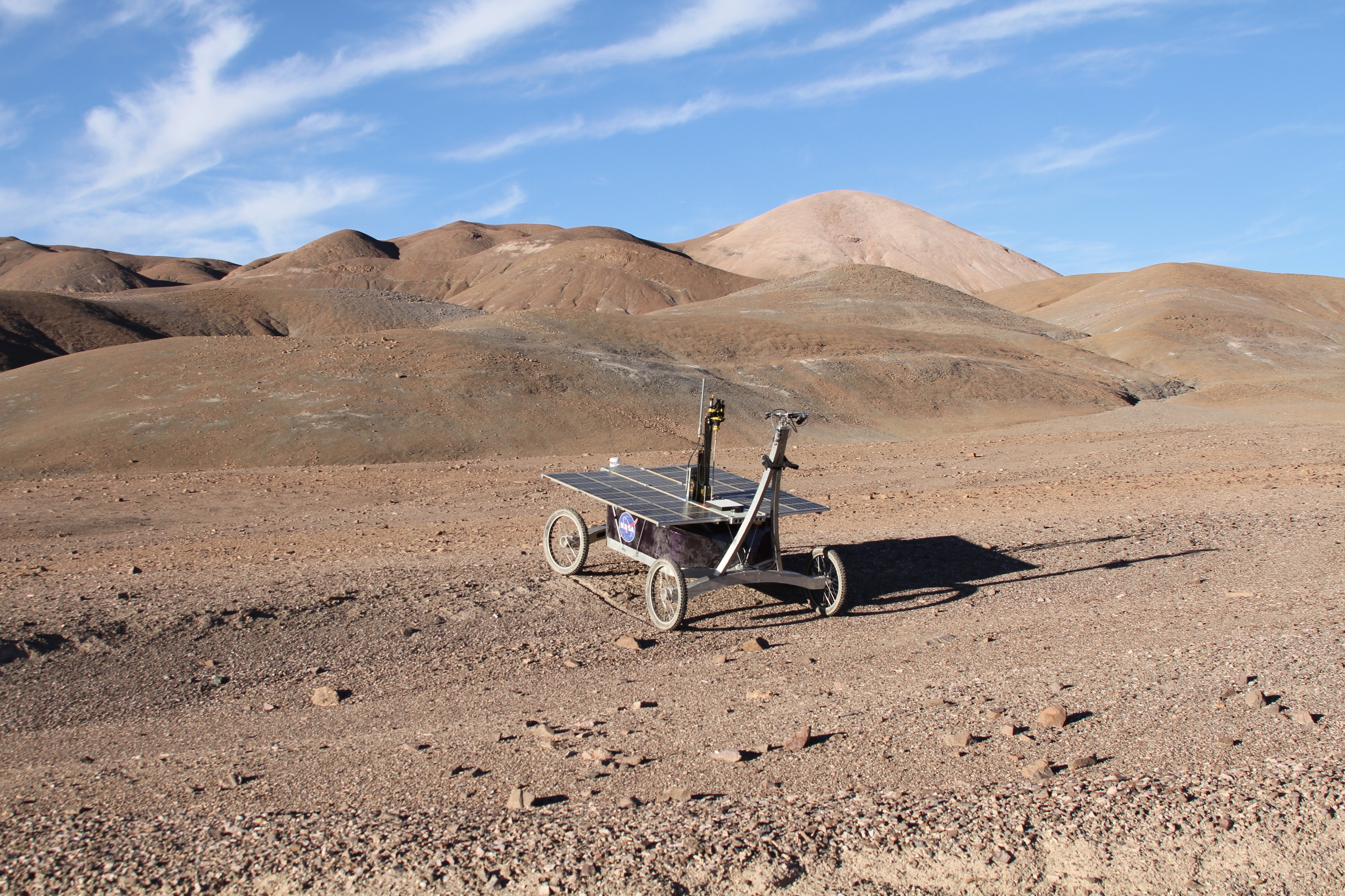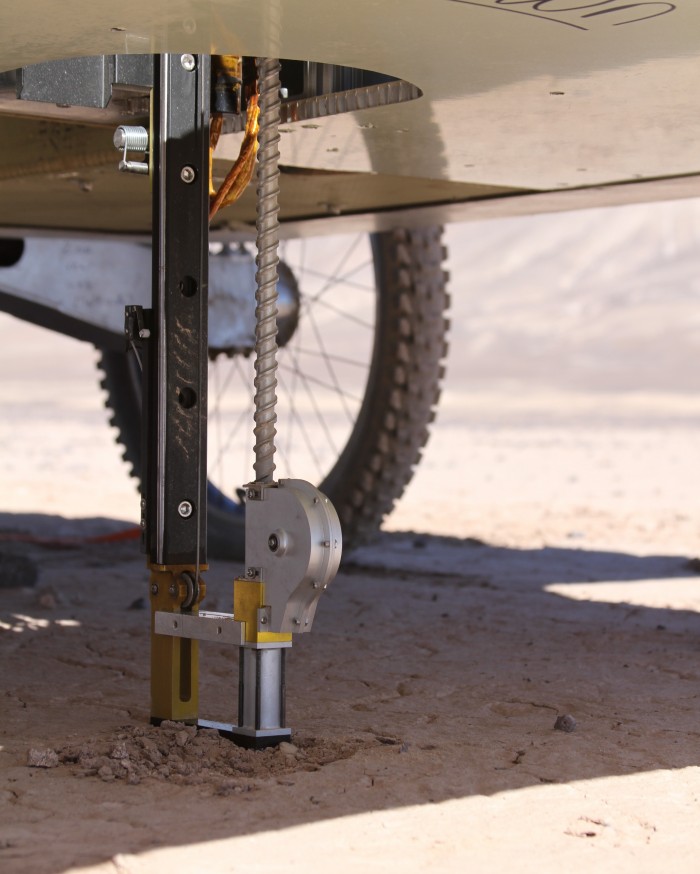The discovery of desert “dead zones” could help find life on Mars

In 2020, two new missions to Mars will lift off. Although the Mars 2020 rover has yet to leave Earth, the mission team has already made a discovery.
The Atacama Desert in Chile is one of the driest places on Earth. After decades without rainfall, the soil has built up a number of minerals that create an exceptionally salty environment—just like on Mars. This makes it the perfect testing ground for future missions.
That’s why Stephen Pointing, a professor of microbial ecology at Yale, and his team chose to analyze microbial life under the surface of the Atacama. They spent a month in the desert looking for life by sending commands to a mock-up Mars 2020 rover as if it were on Mars. That meant all command signals were sent with long delays, and the rover traveled at the same slow speeds that it would on the planet’s surface.
As they published in Frontiers today, while they did find life under the desert’s surface, it wasn’t consistent. “My research group has for several years been finding life gets patchy the more extreme conditions get in deserts. But I wasn’t expecting it to this degree,” says Pointing. “If you take a drill, chances are every 10 centimeters or so you will encounter a lifeless zone.”

Those lifeless zones are associated with extremely salty areas of the soil, but there are no clues on the surface as to whether life is likely to be found underneath or not. If Mars is the same, the hunt for life just beneath its surface will be like finding a needle in haystack.
“While this will make detection more challenging, our findings provide possible signposts to guide the exploration for life on Mars, demonstrating that it is possible to detect life with smart robotic search and sampling strategies,” coauthors Nathalie Cabrol and Kim Warren-Rhodes of the SETI Institute wrote in a press release.
Pointing’s team will now pass the information it has gleaned to NASA researchers who are currently planning how and where the new rover will go about hunting for life.
The life the researchers did find in the Atacama consisted of extremely tough bacteria that are also seen in the dry deserts of western China and the Antarctic. “The closest cousins are those you might find in high Tibetan lakes that are extremely salty,” says Pointing. “These bacteria are a step up the macho chain. They are not only salt tolerant, but can also tolerate drying out completely.”
Pointing says that if the bacteria found in the Atacama desert were transported to Mars, he would expect they would be able to survive there—if they were able to obtain water often enough. If we ever do find life in the Martian subsurface, these bacteria might be what’s waiting for us.
Deep Dive
Climate change and energy
The problem with plug-in hybrids? Their drivers.
Plug-in hybrids are often sold as a transition to EVs, but new data from Europe shows we’re still underestimating the emissions they produce.
Harvard has halted its long-planned atmospheric geoengineering experiment
The decision follows years of controversy and the departure of one of the program’s key researchers.
Why hydrogen is losing the race to power cleaner cars
Batteries are dominating zero-emissions vehicles, and the fuel has better uses elsewhere.
Decarbonizing production of energy is a quick win
Clean technologies, including carbon management platforms, enable the global energy industry to play a crucial role in the transition to net zero.
Stay connected
Get the latest updates from
MIT Technology Review
Discover special offers, top stories, upcoming events, and more.